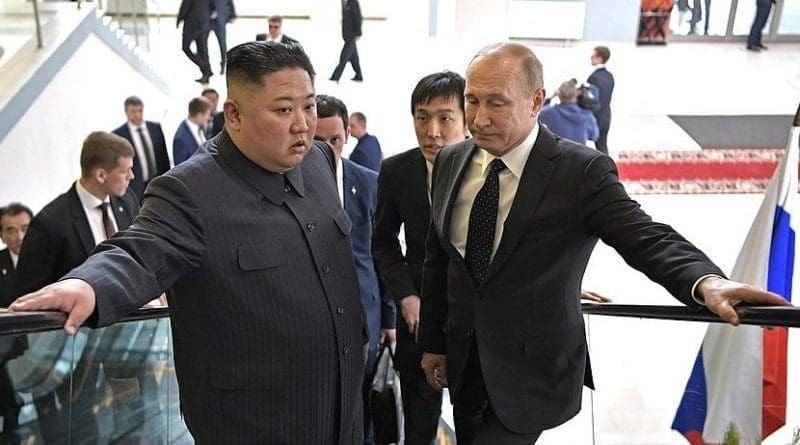North Korea Makes Uniforms For Russian soldiers In Ukraine, Violating UN Sanctions
By RFA
By Hyemin Son
North Korean factories are producing uniforms for Russian soldiers – in violation of U.N. sanctions – as Moscow’s war in Ukraine begins its first full winter, sources inside North Korea told Radio Free Asia.
At least three factories in the North Korean capital of Pyongyang, and more in other parts of the country, are bringing in foreign currency for the cash-strapped government by making winter uniforms, underwear, and footwear for Russian soldiers in Ukraine using Russian raw materials, the sources said.
“The export garment factory in Moranbong district in Pyongyang … has been manufacturing Russian military uniforms for about a month now,” a source in Pyongyang told RFA’s Korean service on condition of anonymity for security reasons.
“They are making winter uniforms and underwear to be used by the soldiers in the war with Ukraine. I heard from a high-ranking official at the factory that they received Russian fabric to make the uniforms, and Russia has been ordering large quantities,” he said.
RFA Korean reported that Russia’s embassy in North Korea said in a statement Friday that Moscow had an interest in purchasing clothes and shoes from Pyongyang.
“All such projects must be implemented in strict accordance with UN Security Council resolutions banning the import of certain goods from the DPRK,” the embassy said, using the acronym for North Korea’s official name, the Democratic People’s Republic of Korea.
But U.N. Security Council Resolution 2375, adopted in September 2017, completely bans all textile exports from North Korea.
The finished uniforms produced in the three Pyongyang factories will be sent to Russia via the Tumen River-Khasan freight train, which crosses the Russo-Korean border in the northeastern part of North Korea, according to the source.
Rail freight along this route resumed on Nov. 2, after a two-year, eight-month hiatus due to the COVID-19 pandemic.
Each of the Pyongyang factories employs between 500 to 1,000 garment workers, the source said.
Prior to the COVID-19 pandemic, export garment factories in Pyongyang earned foreign currency by exporting garments they made for companies in China and Eastern Europe, according to the source, who said that the income they earned went to fund the government through Office 39, the organization charged with procuring slush funds for the country’s leader Kim Jong Un and his family.
After the country suffered a lengthy stint of producing nothing during the pandemic, the party is eager to start up the factories again.
“As the war between Ukraine and Russia continues, the propaganda about friendship between Russia and North Korea has been intensifying,” the source said. “With these new orders for military uniforms for the Russian soldiers in Ukraine, some of the garment factories in Pyongyang are again earning foreign currency.”
Prior to the resumption of rail freight across the Russo-Korean border, the raw materials for the uniforms had to be transported by sea, a source in the city of Pyongsong in South Pyongan province, north of Pyongyang, told RFA.
A factory in Pyongsong has been receiving the raw materials over the past month by rail from the city of Rason, at North Korea’s distant northeastern tip, he said.
“North Korean trade representatives in Russia sent the materials to Rason Port from a Russian port. The raw materials are then sent to Pyongyang and Pyongsong by freight train from Tumen River station,” the second source said. That location is home to the Rason Special Economic Zone, one of several zones set up in the 1990s to promote foreign investment.
“As … freight train service between North Korea and Russia resumed on November 2nd, it’s not only that the finished uniforms are going to Russia, raw materials for new uniforms will be coming in this way,” he said.
Sources told RFA that in the Rajin area of Rason, which borders Russia, there are many export garment factories that will also produce uniforms for the Russian military. They will also make boots in the near future, sources said.
Translated by Claire Shinyoung Oh Lee and Leejin J. Chung. Written in English by Eugene Whong.

